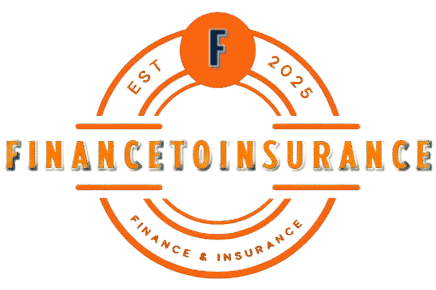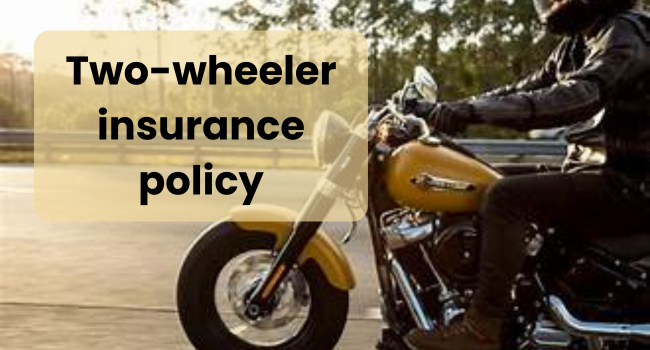Owning a motorcycle offers freedom, thrill, and convenience, especially in densely populated or traffic-heavy areas. However, along with the advantages of motorcycling comes the responsibility of ensuring both your safety and financial security. One essential tool to protect your investment and yourself is motorcycle insurance.
Motorcycle insurance is more than just a legal requirement; it’s your safety net against unforeseen accidents, theft, or damage. This article provides a comprehensive overview of motorcycle insurance, from its importance to policy types, coverage, claims, and tips for choosing the right plan.
1: What Is Motorcycle Insurance?
Motorcycle insurance is a contract between the bike owner and an insurance company. In exchange for a premium, the insurer provides financial protection in case of accidents, theft, damage, or liability involving the insured motorcycle.
It operates similarly to car insurance but may differ in terms of policy specifics, premium rates, and coverage due to the unique nature and higher risks associated with riding two-wheelers.
Chapter 2: Why Is Motorcycle Insurance Important?
1. Legal Compliance
Most countries mandate that every motorcycle on the road must have a minimum level of insurance coverage, typically third-party liability.
2. Financial Security
Motorcycle repairs can be expensive. Insurance helps reduce the financial burden in the event of a crash, theft, or damage caused by natural disasters.
3. Medical Assistance
In case of injury during an accident, your bike insurance coverage may include medical expenses, ensuring you’re not burdened with unexpected costs.
4. Theft Protection
Motorcycles are easier to steal than cars. A good insurance policy compensates for theft or vandalism.
5. Peace of Mind
With proper coverage, riders enjoy peace of mind knowing they’re protected financially.
Chapter 3: Types of Motorcycle Insurance Policies
There are various types of two-wheeler insurance policies depending on the coverage level you need:
1. Third-Party Liability Insurance
This is the most basic and legally required coverage in most jurisdictions. It covers:
- Bodily injury to others
- Property damage to third parties
- Legal expenses
However, it doesn’t cover damage to your own bike.
2. Comprehensive Motorcycle Insurance
Covers both third-party liabilities and:
- Damage to your bike from accidents
- Theft
- Vandalism
- Natural disasters (floods, storms)
- Fire or explosion
3. Own-Damage Cover
This type covers only the damages to your own motorcycle and doesn’t include third-party liabilities. It’s useful for vehicles not used on public roads.
4. Personal Accident Cover
Provides compensation in case of accidental death or permanent disability to the rider or pillion passenger.
Chapter 4: What Does Motorcycle Insurance Cover?
Here’s a breakdown of what you can expect from your bike insurance coverage:
✅ Covered:
- Accidents and collisions
- Fire and explosion
- Theft or burglary
- Natural calamities
- Man-made disasters (riots, strikes)
- Personal accident benefits
- Third-party liabilities
❌ Not Covered:
- Regular wear and tear
- Mechanical or electrical breakdown
- Driving without a valid license
- Riding under the influence
- Illegal racing or stunts
- Consequential damages
Chapter 5: Understanding Motorcycle Insurance Premiums
Premium is the amount paid to the insurance provider for coverage. Several factors influence the cost of your motorcycle insurance:
1. Type and Model of Motorcycle
Expensive and high-performance bikes attract higher premiums.
2. Age of the Vehicle
Older bikes may have lower premiums but could also get lower coverage values.
3. Location
Urban areas typically have higher premiums due to increased risk of accidents and theft.
4. Riding History
Riders with a clean record may get discounts. Accidents or claims in the past can increase your premium.
5. No Claim Bonus (NCB)
If you don’t make any claims during a policy year, you’re eligible for a discount (up to 50%) on renewal.
6. Add-ons and Riders
Optional covers like zero depreciation, engine protection, or roadside assistance can increase your premium.
Chapter 6: Add-Ons for Enhanced Coverage
Boost your insurance policy with these add-ons:
1. Zero Depreciation Cover
Ensures full claim without depreciation deductions.
2. Roadside Assistance
Help in case of breakdowns, flat tires, or fuel emergencies.
3. Engine Protection
Covers engine and gearbox damage not related to accidents.
4. Helmet Cover
Replaces or repairs a damaged helmet after an accident.
5. Key Replacement
Covers the cost of replacing lost or stolen bike keys.
Chapter 7: How to Buy Motorcycle Insurance
Step-by-Step Guide:
- Evaluate your needs – Choose between third-party, own-damage, or comprehensive.
- Compare online – Use comparison tools to get the best premium rates.
- Check for discounts – Look for NCB, safe rider discounts, or bundling options.
- Read the fine print – Understand policy exclusions and terms.
- Buy and save – Purchase online for extra discounts and quick activation.
Chapter 8: How to File a Motorcycle Insurance Claim
Accidents can be stressful. Here’s how to file motorcycle accident claims quickly and efficiently:
Step 1: Inform the Insurer
Immediately notify the insurance company about the accident.
Step 2: File an FIR (if necessary)
In case of theft or serious injury, file a police report.
Step 3: Document the Scene
Take photos, videos, and gather witness information.
Step 4: Submit the Claim
Submit all required documents: claim form, copy of FIR, driving license, RC, photos, etc.
Step 5: Surveyor Visit
An insurance-appointed surveyor will inspect the damage.
Step 6: Repair and Settlement
Get your bike repaired at a network garage and claim reimbursement or cashless service.
Chapter 9: Common Mistakes to Avoid
- Choosing the cheapest policy blindly
- Not disclosing modifications or usage (e.g., commercial use)
- Missing policy renewal dates
- Overlooking policy exclusions
- Not checking for add-ons and discounts
Chapter 10: Tips for Lowering Your Motorcycle Insurance Premium
- Install anti-theft devices approved by authorities.
- Bundle policies (bike + car or home insurance) from the same provider.
- Avoid small claims to preserve your NCB.
- Increase your voluntary deductible to reduce premium.
- Maintain a clean riding history to earn lower rates.
Chapter 11: Electric Motorcycle Insurance
With EVs becoming more popular, insurers now offer specific policies for electric motorcycles.
EV-specific Benefits:
- Battery coverage
- Charging accessories insurance
- Eco-friendly discounts
- Lower premiums due to fewer moving parts
Chapter 12: Motorcycle Insurance Around the World
United States:
- Most states require liability insurance.
- Minimum coverage limits vary.
- Optional coverages include collision and uninsured motorist.
United Kingdom:
- Compulsory third-party coverage.
- Options: Third-party fire and theft, comprehensive.
India:
- Third-party liability is mandatory.
- IRDAI regulates insurance.
- Long-term policies (5 years) are available for new bikes.
Chapter 13: Choosing the Best Motorcycle Insurance Company
Factors to Consider:
- Claim settlement ratio
- Network garage availability
- Customer reviews
- Premium costs
- Add-on options
- Online policy management
Some of the leading global and Indian bike insurance companies include:
- GEICO
- Progressive
- State Farm
- ICICI Lombard
- HDFC Ergo
- Bajaj Allianz
Chapter 14: Renewing Motorcycle Insurance
Renew your policy before it lapses to:
- Retain your No Claim Bonus
- Avoid break-in policy inspections
- Maintain continuous legal compliance
Set auto-reminders or opt for automatic renewal with your provider.
Conclusion
Motorcycle insurance is not just about fulfilling legal requirements—it’s about protecting your financial well-being and ensuring that you can ride with confidence. A carefully selected two-wheeler insurance policy can provide peace of mind in the face of accidents, theft, or other unexpected events.
Whether you’re riding a 100cc commuter bike or a 1000cc superbike, your coverage needs may differ, but your need for motorcycle insurance remains critical.


